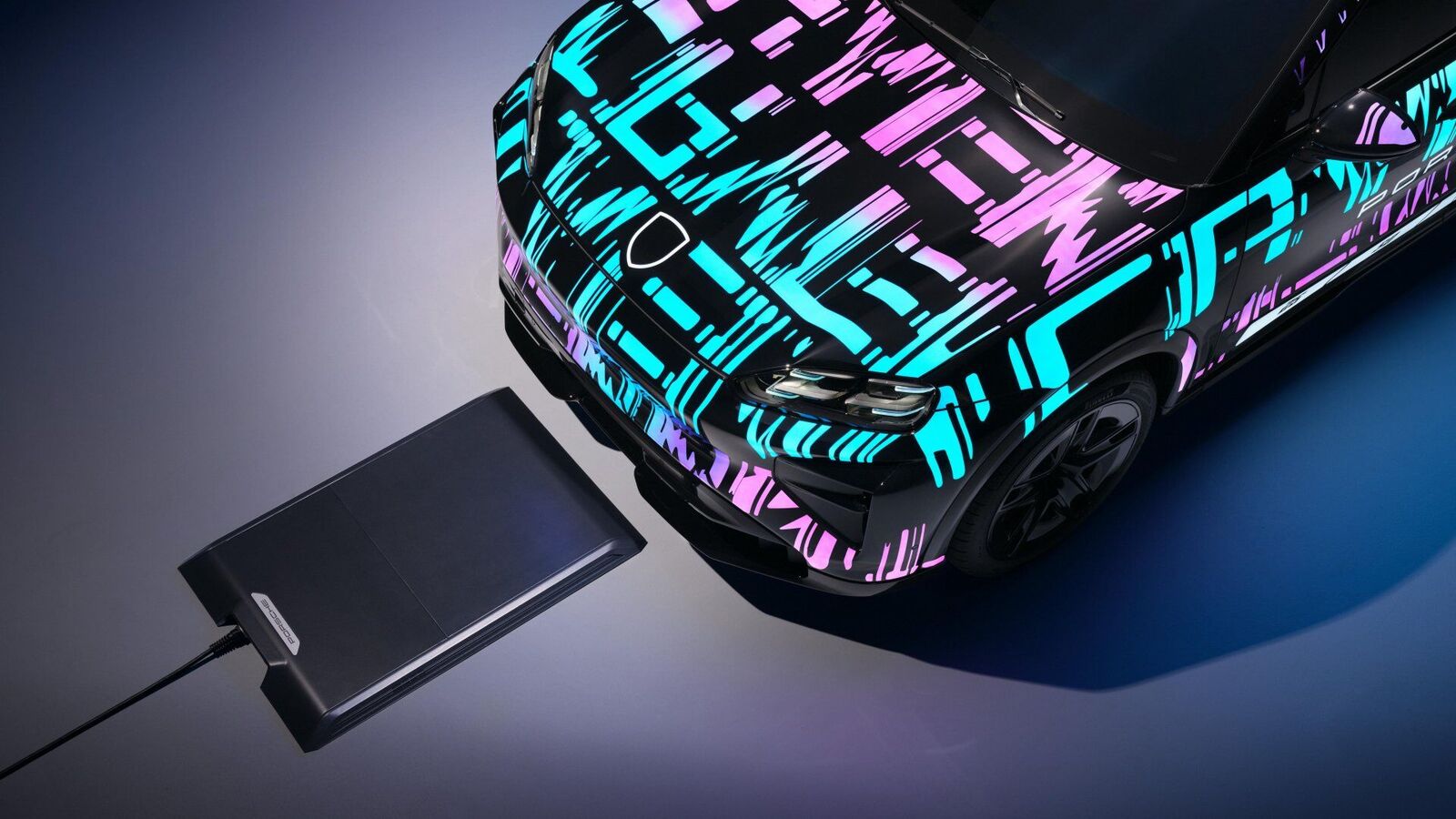- Porsche's upcoming Cayenne Electric introduces wireless home charging using a floor plate and underbody receiver, enabling automatic, cable-free energy transfer with built-in safety controls.
View personalized offers
Porsche is preparing to introduce a wireless charging option for the upcoming Cayenne Electric, aiming to eliminate one of the most awkward parts of EV ownership: plugging in. Instead of handling a cable, owners will be able to park on a floor-mounted plate in their garage and let the car do the rest. Here's a clear explanation of how the system works, what makes it different and why it matters.


A wireless setup consists of two main components:
- A floor plate is installed in a parking lot or garage.
- A receiver unit is installed behind the front axle of the Cayenne.
The floor plate houses all the necessary electronics in a single box approximately 6 cm high, 78 cm wide and 117 cm long. Unlike previous inductive systems that required additional hardware, such as a wallbox, this plate only requires connection to the household power supply.
Before charging for the first time, the vehicle and the plate perform a one-time digital handshake, exchanging data and passwords via the plate's built-in Wi-Fi. This prevents misuse including attempts at power theft.
How do drivers position the SUV?
To guide the car to the right place, Porsche uses technology similar to its Keyless Go system.
- On the car display, the receiver's location is shown as a green dot.
- The charging coil is visible as a green circle in the floor plate.
- Parking is accurate when the point sits inside the circle.
Even if the alignment is not perfect, the system allows up to 10 cm of misalignment, with the software continuously adjusting the charging parameters to maintain efficiency.
The science behind the “wireless” part
Although the idea is similar to wireless phone charging, the underlying engineering is more complex. The plate uses inductive coupling, where a magnetic field created by a coil in the floor plate induces a voltage in a matching coil on the vehicle.
To make this work at EV-scale power levels, the system converts regular grid electricity into direct current and then transforms it, inside the plate, into high-frequency alternating current of about 85 kHz. This high-frequency signal is what allows useful amounts of energy to efficiently cross the air gap. Continuous software monitoring ensures that even if the coils are not perfectly aligned, the power flow remains stable.
Security systems work in the background
Charging in the air gap requires careful control of heat, magnetic fields, and anything that slides under the vehicle. The receiver is surrounded by shielding to keep magnetic exposure away from the cabin, while ferrite components in the plate and vehicle direct the magnetic field where it is needed.
The plate constantly checks for metal objects, keys, tools and coins that may become hot if left on or near the charging area. It also uses motion detection to keep pets or hands from reaching under the car. If something is detected, the system warns the driver or stops charging immediately. Porsche says the technology also stays well within electromagnetic-compatibility limits to avoid interference with other electronics.
What can owners expect
Day-to-day use is designed to feel “normal” without any cables. Park, confirm alignment on the display, set the parking brake and drive away. Charging times and performance should match what owners already expect from a wired 11 kW home setup.
Porsche is also exploring a future version where the car could park itself on top of the plate and automatically begin charging, taking the driver out of the process entirely.
Upcoming cars in India in 2025, check out the best SUVs in India.
First publication date: 15 November 2025, 08:30 AM IST

